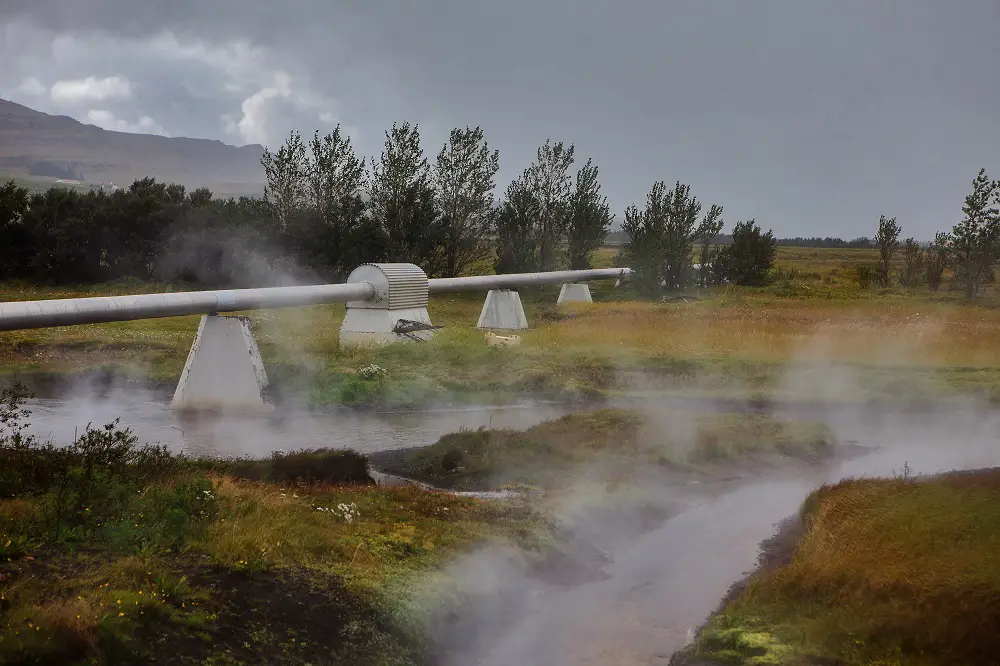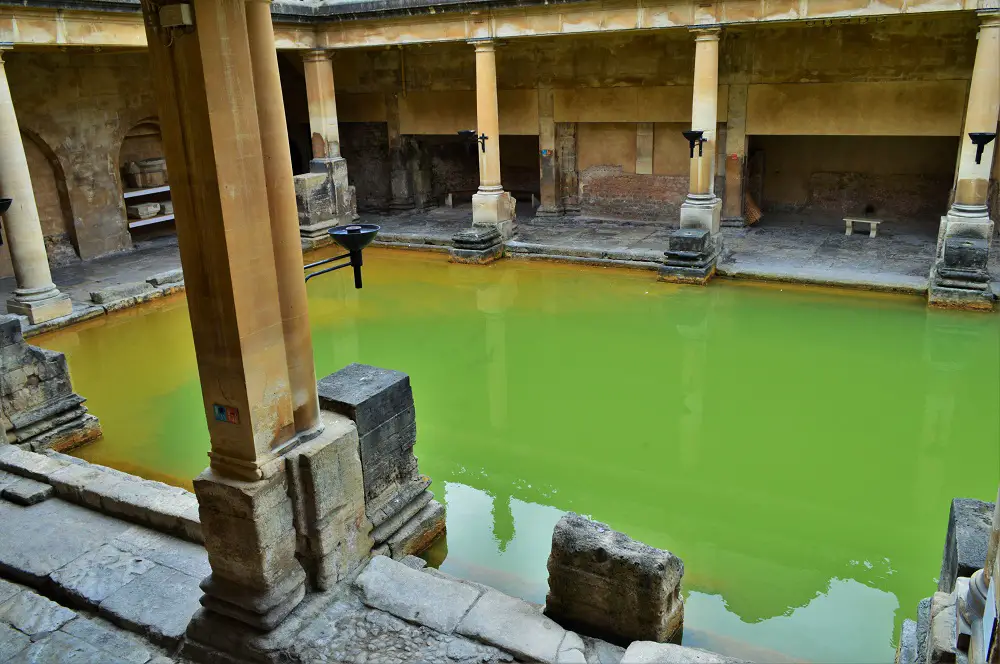There are many different examples of geothermal energy in use around the world, and they broadly fall into one of two categories:
- electricity generation plants
- space and water heating
Although there are numerous other uses for geothermal energy, as outlined later in this article.
First Ever Geothermal Electricity Generation
In the midst of the idyllic Tuscany hills lies the town of Larderello, in an area known locally as “Valle del Diavolo” (Devil’s Valley) due to the many geothermal vents constantly belching acrid steam.
Geothermal energy was used here to generate electricity for the first time ever. In 1904, Prince Piero Ginori Conti of Trevignano built the first dry steam powered generator using the geothermal vents around Larderello.

After expansion in 1911, it developed into a full geothermal power plant, Larderello-1, which began commercial operation in 1913, generating 250 kilwatts (kW) of electricity.1 There is still a geothermal power plant at Larderello today, but at around 300 megawatts (MW) generation capacity, it is substantially larger than its predecessor!
Highest Production of Geothermally Generated Electricity
The United States generates more geothermal electricity than any other country in the world. As of 2018, it has an installed capacity of 3,639 MW, comfortably beating Indonesia into second place, which has a national generation capacity of 1948 MW.2
The US also plays host to the most productive geothermal field in the world – The Geysers in the Mayacamas Mountains, California. Here, there are 22 currently operating geothermal plants, all used for generating electricity. The field has a maximum generation capacity of 1590 MW across all 22 plants.3
The Most Extreme Geothermal Well
The highest water temperatures and pressures ever recorded in a geothermal well are in the IDDP-2 exploratory well in Reykjanes, Iceland. Test results from 2017 showed that water from the bottom of the well was at a temperature of 426 degrees C (799 degrees F) and a pressure of 340 bars.4 This is the first time that ‘supercritical’ steam has been achieved from a geothermal well – an important step in making geothermal power even more efficient and cost effective.
Due to increasing concern about global warming and CO2 gas emissions, many countries are increasing the amount of geothermal exploration for electricity generation.
For example, in Cornwall, UK – a country not traditionally associated with geothermal power – a 5 km (3.2 mile) geothermal well has been drilled, with an at-depth temperature of 195 degrees C (383 degrees F). Once drilling and testing is complete, a 3 MW power plant will be built at the location.5
Iceland

Due to its high level of easily-accessible volcanic activity, Iceland is famously linked with geothermal energy.
In Iceland, 9 out of 10 households are heated with geothermal energy. Data shows that Iceland used 12,972 gigawatt-hours (GWh) of geothermal energy in 2013; 43% of this was used for space heating, and 40% was used to generate electricity. The remaining 17% went to various other uses (heating swimming pools, melting snow, industry/fish farming).6
Deepest Geothermal Well
Another Scandinavian country, Finland, currently has the deepest geothermal well in the world. As part of a geothermal heating plant project for the city of Otaniemi, energy company ST1 have drilled a 6.4km (4 mile) pilot well. At time of writing (September 2021), this is the deepest geothermal well in the world.7
Roman Baths
Two thousand years ago, the Romans were taking advantage of geothermal energy to heat their thermae, or spa baths. The best preserved example of a Roman thermae is in Somerset, UK in the city of Bath – so named after its Roman bathing facilities.

In Bath, a geothermally heated spring constantly brings hot water to the surface. Sometime around 60-70AD, the Romans built a public bathing house over the spring, filling the pool with the hot water. The water comes out of the ground at a temperature of 45 degrees Celsius (113 degrees Fahrenheit), but by the time it reaches the bathing pool, it is at a perfect bathing temperature of 34 degrees C (93 degrees F).8
Geothermally Heated Greenhouses
Geothermal energy is used to support agriculture in many countries around the world in many ways, primarily by heating greenhouses. This enables warm-climate crops and plants to be grown all year round in colder climate countries.
Use of geothermal energy to heat greenhouses has been growing rapidly in Europe over recent years, where efforts are being made to discontinue the burning of gas for heating greenhouses. This is seen in places such as in Heemskerk, The Netherlands, where orchids and tropical cuttings are cultivated in a 7.1 hectare greenhouse complex that is heated by geothermal energy.9
Also in the Netherlands, in Luttelgeest, a geothermal plant is being built to heat a 24 hectare greenhouse complex for Dutch pepper growers Hoogweg.
Iceland has the longest track record of heating greenhouses with geothermal energy, where they began doing so in 1924. Iceland also uses geothermal steam to boil and disinfect the soil.10
There are many other uses of geothermal energy in the agriculture sector, including:
- Soil Heating
- Aquaculture (Fish Farming)
- Algae Cultivation
- Food Drying
- Milk Pasteurization
- Evaporation and Distillation
- Peeling and Blanching
Further explanations of these processes are described in the document “Uses of Geothermal Energy in Food and Agriculture”, published in 2015 by the Food and Agriculture Organization of the United Nations.11
References
1. https://www.power-technology.com/
2. https://www.nsenergybusiness.com/
7. https://smartrenew.interreg-npa.eu/
8. https://www.thermaebathspa.com/
9. https://www.thinkgeoenergy.com/
10. https://nea.is/

